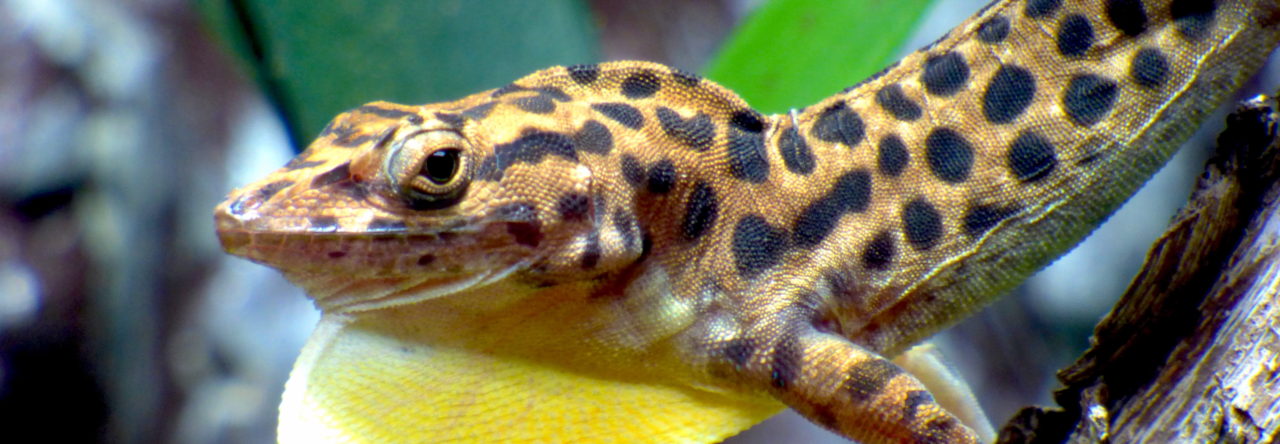We (Rosario Castaneda, Anthony Herrel, Luke Mahler and I) have just completed the first leg of our 2.5 week Colombian anole sojourn. First up: La Cumbre in the hills north of Cali. At 2000 meters, it was chilly! Going out our first night, we found plenty of long-legged Anolis ventrimaculatus. Imagine our surprise the next day when they were hard to find when active! This was reminiscent to us of A. gemmosus in Mindo, which also is very abundant at night–we’re talking Caribbean anole night abundance–but not easy to find while active.
The ones we did find were generally low to the ground, often on tree trunks, sometimes on vegetation. They refused to move when we filmed them, but their stomach contents indicated that they had been foraging, even at temperatures in the upper teens. These are tough, wily buggers!
We found two other species in smaller numbers, but only at night. The most exciting was A. calimae, which was not known from the locality at which we were working. We found a male and a female. They look moderately like twig anoles–elongate, slender body habitus–but there limbs are on the long side. We’ll see what the morphometrics say. However, when we released them, they behaved exactly like twig anoles, squirreling to the far side of a branch, creeping forward, carefully placing one foot, then the next, freezing. Unfortunately, despite intensive efforts, none were located during the day, perhaps not surprising, as many twig anoles are very cryptic and hard to find, particularly given that they live in dense vegetation.
Lastly, we found a number of A. mariarum in dense fields of high, stout grass. The photo below shows one such area. These lizards have to be living in the grass; they’re too far from anything else (the occasional tree notwithstanding. Yet search as we might, we couldn’t find them during the day. Our guess is that they are active in the spaces on the ground beneath the grass. In fact, when we let the lizards go, they seemed quiet happy to scamper about, and even display at each other, under the grass canopy.

Anolis mariarum’s field of dreams, where several were found sleeping, but none could be found during the day.
An exciting, if chilly start, but we’ll soon be thinking wistfully of cool days and evenings as we head to our hot and steamy next location.
- Evolution in Real Time on Lizard Island - March 23, 2025
- Spider Snags Adult Anolis osa - March 22, 2025
- An Homage to the Green Anoles of New Orleans - March 21, 2025




Levi Gray
No eulaemus, eh? Any cool non-anoles?
Julian Velasco
I think you refer to Anolis antonii, a fuscoauratoid anole, which is very common in La Cumbre and surrounding area. Anolis mariarum occurs on the north of Colombia (Antioquia department).